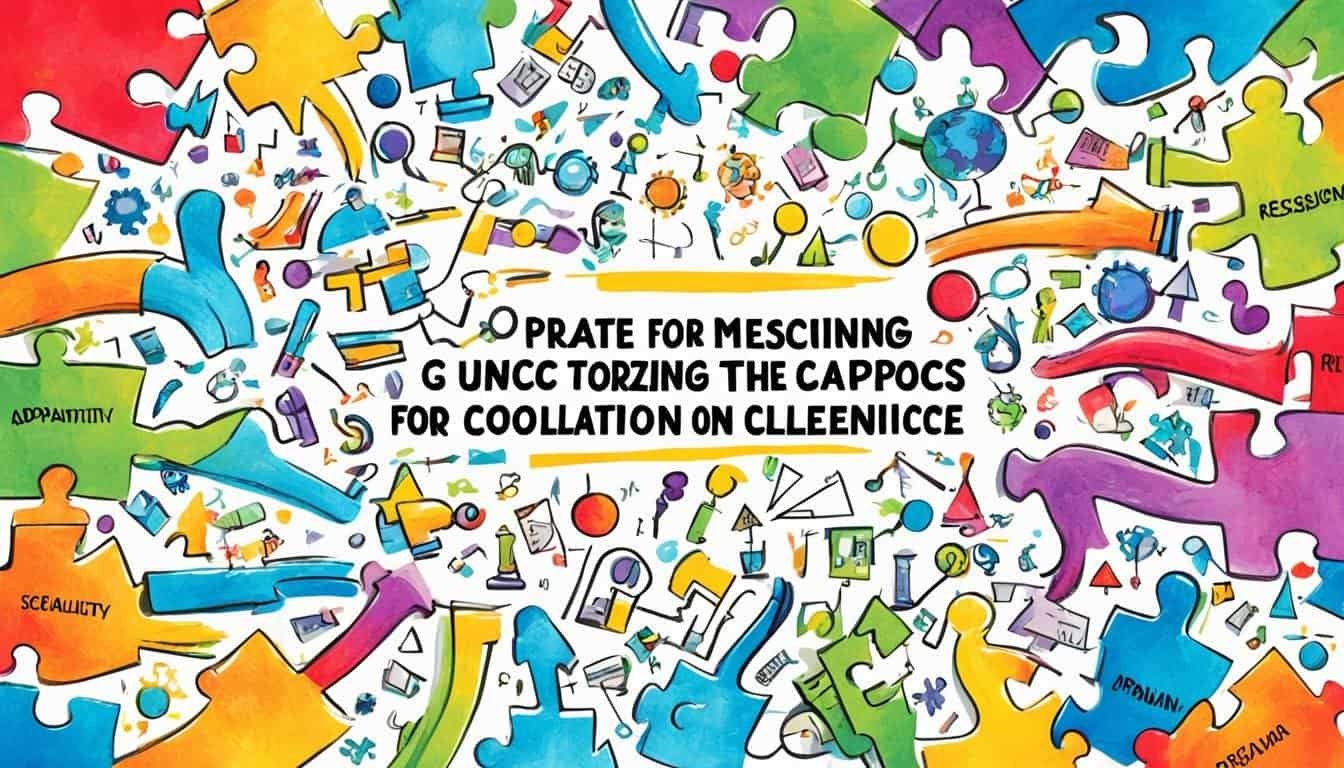Essential Lessons from Lynda Gratton for Success
“The opportunity to step out of your comfort zone and embrace new ways of working can lead to transformative outcomes.”
Lynda Gratton, the founder and CEO of HSM Advisory, has dedicated her career to unlocking the human potential in the workplace. As a professor of Management Practice at London Business School and the author of several influential books, including “Redesigning Work: How to Transform Your Organization and Make Hybrid Work for Everyone,” Lynda’s insights offer valuable guidance for leaders and professionals navigating the ever-evolving work landscape.
In this article, we delve into Lynda Gratton’s journey, her passion for redesigning work, and the profound lessons she imparts. We explore her book “Redesigning Work,” where she provides actionable strategies for leaders to enhance productivity and engagement and create a work environment that fosters success. We also examine her vision of the future of work, the defining qualities of effective leaders, and her advice for aspiring thought leaders and experts.
Join us as we unravel the wisdom of Lynda Gratton and discover the essential lessons that can empower you to thrive in today’s dynamic work landscape.
Key Takeaways:
- Embrace new ways of working to unlock transformative outcomes.
- Design work that utilizes human potential for greater productivity and engagement.
- Seize the opportunity to reimagine work and embrace a hybrid model.
- Create a work environment that offers flexibility in both place and time.
- Develop empathy, embrace a learning mindset, and take calculated risks as an effective leader.
Lynda Gratton’s Journey and Passion for Redesigning Work
Lynda Gratton’s journey towards redesigning work began at a young age when she worked on a chocolate packing line at 16. This experience sparked her realization that work should be more than just mindless tasks and repetitive routines. Instead, it should tap into the immense potential of human beings.
Driven by this passion, Lynda immersed herself in research on motivation and its application in organizations. She recognized the need to connect research with practical solutions to create work environments that foster engagement, creativity, and fulfillment.
Today, as a professor at London Business School and the founder of HSM Advisory, Lynda Gratton is committed to helping companies future-proof their business strategies. Her expertise in redesigning work has the power to transform organizations, unlocking their employees’ human potential.
Furthermore, Lynda Gratton’s extensive body of work extends beyond academia. She is a prodigious writer, having authored ten books that tackle various aspects of work, including her influential book “The 100-Year Life.” Her writings provide profound insights into the future of work, resilience, and longevity in today’s dynamic landscape.
“I believe that by redesigning work, we can create opportunities for individuals to explore their passions, achieve mastery, and contribute their unique talents to society.” – Lynda Gratton
As she continues to champion her mission of redesigning work, Lynda Gratton inspires individuals and organizations to rethink the way we work, bringing humanity and purpose back into the center of our professional lives.
Lessons from Lynda Gratton’s Book “Redesigning Work”
In her book “Redesigning Work,” Lynda Gratton offers valuable insights and practical advice for leaders striving to create a productive and engaging work environment. Drawing from her expertise in organizational behavior and human potential, Gratton presents a compelling case for rethinking work in the context of the future of work. By embracing a hybrid model that blends office and remote work, considering the physical space, and configuring time effectively, leaders can unlock the full potential of their teams.
Rethinking Work in the Future
Gratton emphasizes the importance of seizing the opportunity presented by the pandemic to reimagine work and move away from outdated practices. The future of work demands a shift from traditional, rigid work designs towards a more flexible and adaptable approach. By leveraging the advantages of a hybrid model, companies can create a dynamic and inclusive work environment that caters to both individual preferences and organizational goals.
Designing Work for Productivity and Engagement
According to Gratton, designing work that fosters productivity and engagement requires a thoughtful consideration of both the physical and virtual aspects. Leaders must create spaces that facilitate collaboration, creativity, and well-being, whether in the office or at home. By aligning work tasks with employee skills and preferences, leaders can empower individuals to excel and contribute meaningfully.
“The key to designing work for productivity and engagement lies in creating an environment that aligns with the tasks of the job and the diverse needs of employees.”
Tapping into the Power of Hybrid Work
Gratton advocates for a hybrid work model that allows employees to choose where they work from, be it the office or their homes. This approach not only promotes work-life balance but also enables individuals to optimize their productivity. Leaders must focus on providing the necessary support and resources to enable seamless collaboration and communication between remote and in-office team members.
Building a Culture of Flexibility
To design work for productivity and engagement, Gratton stresses the importance of cultivating a culture of flexibility. This includes being open to experimenting with different work arrangements, embracing technology that facilitates remote collaboration, and respecting individual preferences. By creating a culture that prioritizes flexibility, leaders can foster a sense of trust and empowerment among their teams.
Creating Opportunities for Growth
Gratton underscores the importance of providing opportunities for growth and development within the redesigned work framework. Leaders should prioritize continuous learning, encourage cross-functional collaboration, and offer avenues for skill acquisition and career progression. By investing in their employees’ growth, leaders cultivate a motivated and engaged workforce that is poised for success.
As we navigate the future of work, Lynda Gratton’s book “Redesigning Work” offers invaluable lessons for leaders seeking to design work that maximizes productivity and engagement. By embracing the potential of hybrid work and creating a flexible and empowering work culture, organizations can thrive in the evolving work landscape.
The Future of Work According to Lynda Gratton
Lynda Gratton envisions a future of work that embraces variety and flexibility in work design and arrangements. She emphasizes that each company should have its own unique approach to work, aligning it with its purpose, productive aspects of the job, and the aspirations of its employees.
Gratton predicts that hybrid work, where employees split their time between working from home and the office, will become increasingly prevalent. However, the exact balance between remote and in-person work will vary depending on the nature of the work and individual preferences.
Flexibility, both in terms of place and time, is crucial to meeting the diverse needs of employees. This allows individuals to choose where and when they work best, thereby optimizing their productivity and overall satisfaction.
As the future unfolds, organizations will need to adapt and tailor their work design and arrangements to accommodate changing circumstances and individual preferences. Embracing variety and flexibility will be key to creating work environments that foster employee engagement, productivity, and well-being.
Ultimately, the future of work, as envisioned by Lynda Gratton, highlights the importance of work design that caters to the individual needs of employees while aligning with the overall goals and values of the organization.
| Variety in Work Design | Flexibility in Work Arrangements |
|---|---|
| Companies should have their own unique approach to work design that aligns with their purpose, productive aspects of the job, and employee aspirations. | Hybrid work, with a balance between remote and in-person work, will become more prevalent, varying according to work nature and individual preferences. |
| Flexible work arrangements, both in terms of place and time, are essential in meeting the diverse needs of employees and optimizing their productivity. | Organizations need to adapt and tailor work design and arrangements to accommodate changing circumstances and individual preferences in order to foster employee engagement, productivity, and well-being. |
Building Winning Organizational Cultures in the Hybrid Workforce
Creating a successful organizational culture in companies with hybrid or remote workforces goes beyond just considering where people work—it also involves when they work. As Lynda Gratton suggests, leaders should think creatively about time flexibility to accommodate jobs with limited place flexibility. This means offering employees the freedom to determine their hours, days, or even weeks of work, fostering both happiness and productivity.
One way to achieve this is by implementing a virtual or hybrid work model that aligns with the specific tasks of each job. This approach allows employees to optimize their productivity and engagement, benefiting both employers and employees alike. By understanding what drives performance in different job tasks, leaders can design work arrangements that optimize both productivity and employee satisfaction.
Lynda Gratton emphasizes the importance of building flexibility into work schedules and recognizing that employees have varying preferences and needs. By offering flexibility in time, organizations can create a supportive work environment that empowers employees to achieve their best results.
A flexible schedule can contribute to employees’ happiness and productivity. It allows them to manage their work-life balance effectively and helps prevent burnout. When employees have control over their time, they are more likely to be engaged and motivated.
To ensure the success of a hybrid workforce, leaders must foster a culture that values flexibility in time as much as it does flexibility in workspace. By prioritizing employee well-being and considering their individual needs, organizations can create a winning culture that promotes collaboration, innovation, and high performance.
Benefits of Flexibility in Time for Building a Winning Organizational Culture:
- Increased Employee Happiness: Flexibility in time allows employees to manage their personal and professional lives more effectively, leading to improved overall happiness and job satisfaction.
- Enhanced Productivity: When employees have control over their work hours, they can optimize their productivity by working during their most productive periods. This results in higher output and better performance.
- Reduced Burnout: By offering flexibility in time, organizations can help employees maintain a healthy work-life balance, reducing the risk of burnout and promoting long-term well-being.
- Improved Employee Retention: A culture that values flexibility in time can attract and retain top talent. Employees are more likely to stay with organizations that prioritize their individual needs and provide a supportive work environment.
“Flexibility in time is a powerful tool for building a winning organizational culture. It enables organizations to attract and retain top talent while empowering employees to thrive in their personal and professional lives.”
| Benefits of Flexibility in Time | Examples |
|---|---|
| Increased Employee Happiness | Employees can adjust their work hours to spend more time with family or pursue personal interests. |
| Enhanced Productivity | Employees can choose to work during their most focused and productive hours. |
| Reduced Burnout | Employees can schedule breaks and rest days as needed to prevent exhaustion. |
| Improved Employee Retention | Organizations provide a supportive work environment that values work-life balance, attracting and retaining top talent. |
The Defining Qualities of Effective Leaders According to Lynda Gratton
Effective leaders possess a unique set of qualities that enable them to navigate the complexities of the modern work landscape. Lynda Gratton, renowned leadership expert and author, identifies several key attributes that define successful leaders.
Empathy
One of the most important qualities of effective leaders is empathy. By understanding and relating to the experiences, emotions, and needs of their team members, leaders can build trust, foster collaboration, and create a supportive work environment. Particularly in the wake of the collective experience of the pandemic, empathy has become even more crucial in ensuring the well-being and success of employees.
Learning Mindset
Leaders who possess a learning mindset are open to new ideas, perspectives, and experiences. They actively seek out opportunities to expand their knowledge, learn from their mistakes, and grow as individuals. By continuously learning and adapting, leaders can stay ahead of industry trends, make informed decisions, and inspire their teams to embrace a culture of continuous learning and innovation.
Taking Risks
Effective leaders are not afraid to take calculated risks and step outside of their comfort zones. They understand that taking risks is necessary for growth and success. By encouraging a culture of experimentation and empowering their team members to take risks, leaders foster creativity, encourage problem-solving, and create an environment where new ideas can flourish.
“The willingness to take risks and experiment is a key quality of effective leaders.”
According to Gratton, leaders who embrace risk-taking are more likely to discover new opportunities, drive innovation, and lead their organizations to greater heights.
Ambitious Work Design
Leaders who are effective in designing work understand the importance of innovative approaches to work arrangements. They are willing to explore new ways of attracting and retaining talent by offering flexible work options, including hybrid work models. These leaders recognize that creating a work environment that allows employees to thrive in both their personal and professional lives ultimately contributes to organizational success.
By embodying these qualities of empathy, a learning mindset, risk-taking, and ambitious work design, effective leaders can inspire and motivate their teams, drive collaboration, and achieve their organization’s goals.
Taking Leadership Skills to the Next Level According to Lynda Gratton
Lynda Gratton, an esteemed thought leader in the world of work, emphasizes the importance of developing leadership skills that prioritize both employee happiness and organizational performance. Happiness at work has a direct impact on building trust, encouraging collaboration, and nurturing the willingness to innovate and push ideas forward. These elements are essential for achieving long-term success and driving organizational growth.
Leaders, whether seasoned or aspiring, should view their role as an investment in creating a work environment that fosters happiness and productivity. Instead of solely focusing on direct financial gains, leaders should consider the broader impact of their actions and decisions on the well-being of their people and the overall success of their organization.
One key aspect of creating a happy and productive work environment is fairness in work design. Leaders must take into account the individual needs and preferences of their employees when designing work arrangements. This requires a deep understanding of what drives performance and productivity in different job tasks, as well as attentiveness to creating equitable opportunities and treatment for all team members.
By prioritizing fairness, leaders can build an atmosphere of trust and psychological safety, where every individual feels valued and supported. This, in turn, leads to greater employee satisfaction, engagement, and motivation. When leaders create a work environment that genuinely cares for its people and provides equal opportunities for growth and development, the result is a highly productive and engaged workforce.
Developing leadership skills that connect happiness and performance also involves recognizing the importance of personal and professional growth. Leaders should foster a culture of continuous learning and encourage their team members to embrace new challenges and take calculated risks. By creating a safe environment for experimentation and growth, leaders empower their employees to reach their full potential and contribute their best work.
Moreover, leaders can enhance happiness and performance by cultivating a work climate that values open communication, collaboration, and feedback. Regularly seeking input from employees, providing autonomy, and recognizing and acknowledging their contributions fosters a sense of ownership and pride in their work. It also strengthens the bond between leaders and their teams, building a foundation of trust and loyalty.
In summary, Lynda Gratton’s insights demonstrate that developing leadership skills that prioritize happiness and performance is essential for success in the dynamic work landscape. By focusing on fairness in work design and understanding the individual needs and preferences of employees, leaders can create a work environment that fosters trust, productivity, and long-term success. By continually developing their own leadership abilities and encouraging personal growth within their teams, leaders can pave the way for both individual and organizational accomplishments.
Lynda Gratton’s Lessons for Thought Leaders and Experts
Aspiring thought leaders and experts looking to write a book to build their influence can learn valuable lessons from Lynda Gratton. She understands the importance of a book in establishing one’s identity as a thought leader and the level of commitment and dedication required to bring it to fruition.
One of Lynda’s key recommendations is to leverage unique research that sets the book apart from others in the field. By providing valuable insights and fresh perspectives on the topic, thought leaders can establish themselves as authorities in their respective industries.
It’s also essential to focus on a specific group of readers when writing a book. Rather than trying to appeal to a broad audience, targeting a niche allows thought leaders to address their readers’ specific needs and answer their burning questions. By crafting highly relevant and tailored content, thought leaders can have a more significant impact on their chosen audience.
Lynda also emphasizes the significance of a strong cover that grabs attention and resonates with the intended audience. A well-designed cover serves as the first impression and can make a book stand out in a crowded marketplace. By investing time and effort into crafting a visually appealing cover that accurately represents the book’s contents, thought leaders can attract readers and generate interest in their work.
Ultimately, following Lynda Gratton’s lessons can help thought leaders and experts write a book that not only showcases their expertise but also positions them as influential voices in their field.
Conclusion
Lynda Gratton’s insights into redesigning work, the future of work, effective leadership, and writing books offer valuable lessons for success in the dynamic work landscape. Her journey and passion for humanizing work inspire others to reimagine work and leverage the opportunities presented by the pandemic. By considering her lessons, leaders can transform their organizations, build winning cultures, and navigate the challenges and opportunities of hybrid work arrangements. Aspiring thought leaders can also learn from Lynda’s experience and advice to take their leadership skills to the next level and make a lasting impact through writing books.








